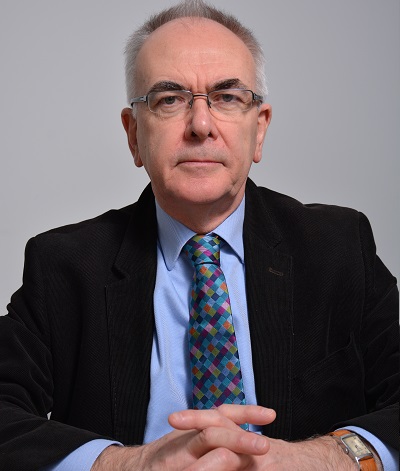Boyd Robertson
The Expert in the Spotlight feature gives you the chance to interact one-on-one with our Ask the Expert-section. The feature also provides interesting and insightful comments regarding the subjects mentioned above, in-depth content and exclusive Q and A's.
Summer 2018

Featured Expert / Area of focus:
Professor Boyd Robertson was principal at Sabhal Mòr Ostaig UHI (National Centre for Gaelic Language and Culture), on the Isle of Skye, UK. He recently retired, after working the last ten years as principal.
The Chair of the Board, Aideen O’Malley, said about Robertson: “Throughout the nine years he has spent here, he has added hugely to the reputation and standing of the college. During his time as principal, Sabhal Mòr Ostaig has earned itself an international reputation for Gaelic research and scholarship.”
Boyd Robertson has written the first edition of the Mercator regional dossier about Gaelic in Scotland, in 2001, and also has written the new updated edition, which was published in May 2018.
Face to face with Boyd Robertson
What is your background in the field of regional and minority languages, education and multilingualism?
Gaelic is my first language and I was a secondary school teacher of the language for ten years before becoming a lecturer in teacher education at Jordanhill College of Education in Glasgow and then at Strathclyde University. I became Principal of Sabhal Mòr Ostaig, the National Centre for Gaelic Language and Culture, and part of the University of the Highlands and Islands, in 2009.
While at Strathclyde, I became involved in an ERASMUS funded European network of universities engaged in teacher education in minority languages. Through that network, I forged links with the Mercator Education Research Centre in Leeuwarden and was commissioned to write the first Regional Dossier on Gaelic in 2001. I also compiled the recently published second edition.
What do you think is the major challenge in your field of work?
The Gaelic language faces numerous challenges. The principal one is to secure the future of the language by arresting the long-term decline in the number of speakers and the shrinkage in the communities where Gaelic is an everyday language. Intergenerational transmission is therefore a priority as is the extension and further development of Gaelic-medium education.
The training and recruitment of teachers remains a particularly intractable issue and one that hampers expansion of Gaelic education. There is also a need to address the deficit in Scottish education where the role of the Gael and Celt in the formation and history of the nation is neglected in the primary school curriculum.
What special projects have you been working on lately?
I have been heavily involved in two ambitious projects. I have led the Sabhal Mòr Ostaig team which has overseen the completion of the first £6m phase of a 20-year project to create a new village adjacent to the College. The Kilbeg village will have 75 houses, indoor and outdoor sports facilities, a conference centre, hotel, shop, business units, college buildings and student residences.
The second enterprise, the production of a historical dictionary of Scottish Gaelic is also long-term in nature. The preparatory phases are almost finished and work will commence soon on the compilation stage of Faclair na Gàidhlig. As Convener of the Steering Committee, I have been at the forefront of a successful campaign to raise c.£3m funding for the 2018-2023 phase of the project.
Are there any important references such as articles etc. you would like to mention?
- Bòrd na Gàidhlig (2018) National Gaelic Language Plan 2018-23, Inverness: Bòrd na Gàidhlig.
- HM Inspectorate of Education (2011) Gaelic Education: Building on the successes, addressing the barriers, Livingston: HM Inspectorate of Education.
- O’Hanlon, F., McLeod, W. and Paterson, L. (2012) Language Models in Gaelic-medium Pre-school, Primary and Secondary Education, Edinburgh: University of Edinburgh.
- O’Hanlon, F. & Paterson, L. (2015) “Gaelic education since 1872” in M. Freeman, R. D. Anderson and L. Paterson (Eds) The Edinburgh History of Education in Scotland, Edinburgh: Edinburgh University Press.
- Robertson, B (2018) Gàidhlig; The Gaelic Language in Education in Scotland (2nd edition). Leeuwarden: Mercator Research Centre.
- Robertson, B (2018), “Gaelic Education” in Bryce, Humes, Gillies and Kennedy (ed) Scottish Education (fifth edition), Edinburgh: Edinburgh University Press.

